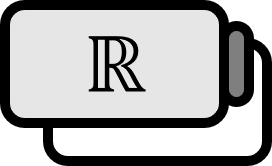Integration by Parts
Theorem 1
Assuming $F$, $G$ are differentiable in the interval $[a,b]$, and $F^{\prime}=f$, $G^{\prime}=g$ are integrable. Then, the following equation holds:
$$ \begin{align*} \int _{a} ^{b} F(x)g(x)dx &= F(b)G(b)-F(a)G(a)-\int _{a} ^{b}f(x)G(x)dx \\ &= \left[ F(x)G(x) \right]_{a}^{b} -\int _{a} ^{b}f(x)G(x)dx \end{align*} $$
Description
This result is called the integration by parts. Memorizing it as Integration-Differential-Integration makes it easy. What to integrate is kept on both sides as is, and what to differentiate is written on the front as is, and differentiated on the back.
$$ \begin{align*} \int Fg &= \left[ FG \right] - \int fG \\ &= \left[ \text{그냥}\cdot\text{적분} \right] - \int \text{미분}\cdot\text{적분} \end{align*} $$
Proof
Being differentiable implies continuity, and continuity implies integrability, thus $F, G$ is also integrable. Now, let’s assume $H(x)=F(x)G(x)$. Then, by the product rule of differentiation, the following holds.
$$ H^{\prime}(x)=F(x)g(x)+f(x)G(x) $$
Since integration is linear, and the product of functions preserves integrability, $H^{\prime}$ is integrable. Then, by the Fundamental Theorem of Calculus Part 2, the definite integral of $H^{\prime}$ is calculated as follows.
$$ \begin{align*} && \int _{a} ^{b}H^{\prime}(x)dx &= H(b)-H(a) \\ \implies && \int _{a} ^{b}H^{\prime}(x)dx &= F(b)G(b)-F(a)G(a) \\ \implies && \int _{a} ^{b}F(x)g(x) + f(x)G(x) dx &= F(b)G(b)-F(a)G(a) \\ \implies && \int _{a} ^{b}F(x)g(x)dx &=F(b)G(b)-F(a)G(a)-\int _{a} ^{b}f(x)G(x) \end{align*} $$
■
Walter Rudin, Principles of Mathematical Analysis (3rd Edition, 1976), p134 ↩︎
